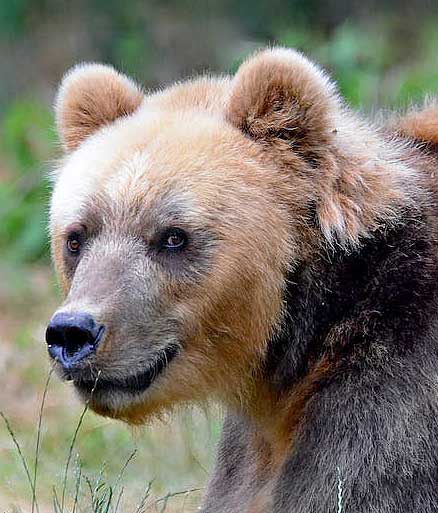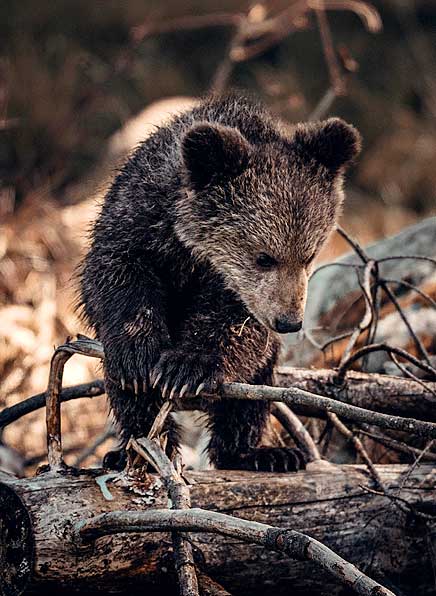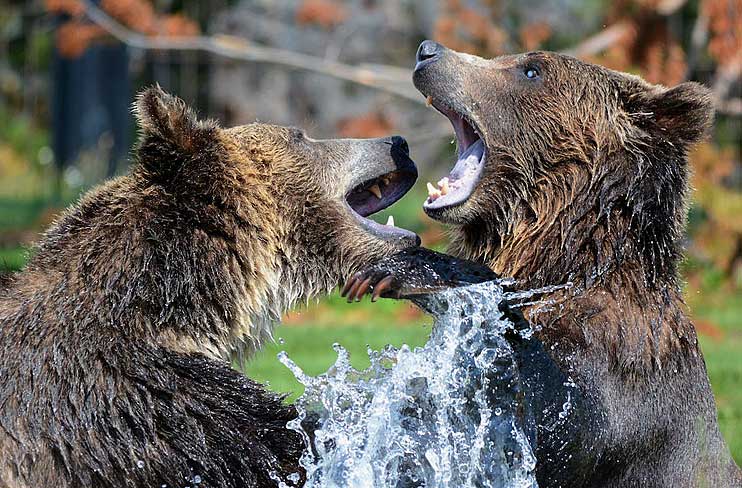Danger! Bears!

Bears are so beautiful, round and furry. That’s why we want to hug them and why teddy bears were made. Even though they are so pretty and they normally project a nonchalant air of calm, any large animals with huge muscles, claws and jaws should be dealt with very carefully.
Bears are generally considered dangerous when they feel threatened, are defending their young or territory, or when they are seeking food. It is important to be aware of bears when you are in bear country, and to take precautions such as carrying bear spray, making noise while hiking, and avoiding surprising a bear. Additionally, bears that have become accustomed to human food and garbage can also pose a danger, as they lose their fear of humans and may become aggressive.

What is the most dangerous bear?
The Grizzly Bear, appropriately named Ursus arctos horribilis, is often considered the most dangerous bear, due to its size and aggression. Of course all the species of bears have the potential to be dangerous and should be respected and avoided in the wild. Size is not the only issue. Sun bears, from Asia, are the smallest bears but they are known to be aggressive.
What to do if you are attacked?
If you think you might be attacked by a bear, it is important to try to stay calm and make yourself appear as large and intimidating as possible. Make loud noises and shout to try to scare the bear away. If a bear does attack, it depends on what type of bear you are facing. With most bears, you should fight back with whatever you can find like knives, sticks and rocks, or bear/pepper spray if you have it. If the bear leaves, do not follow it, as bears are unpredictable and may attack again. The US Nation Park Service however recommends playing dead if a grizzly bear/brown bear attacks. You should lay on your stomach, hopefully with a backpack or bag you can leave on to help protect you and covering your neck and head the best you can with your arms and hands.
The number of bear attacks each year varies depending on the location and population of bears in the area. In North America, the average number of reported bear attacks is around 50-60 per year, with most of these incidents occurring in Alaska and Canada. However, actual attacks are likely to be higher, as not all or even the majority of attacks may be reported. It’s worth noting that the vast majority of bear encounters do not result in attacks and bears usually avoid human contact if given the opportunity.

